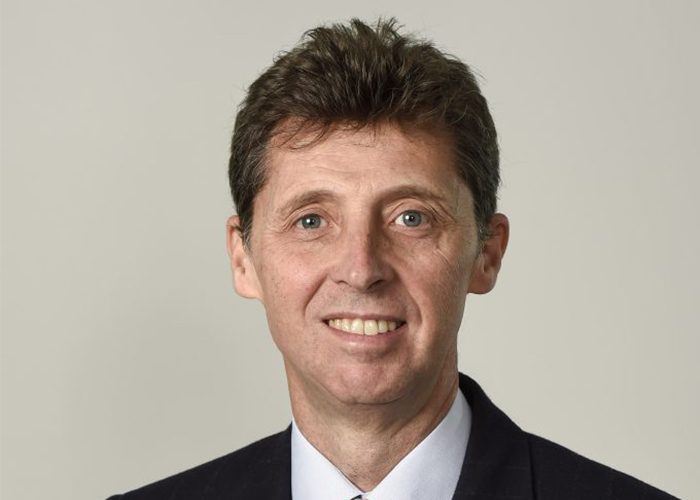IMDEA Networks

"En una o dos décadas, las comunicaciones cuánticas podrían impregnar nuestra vida diaria"
31 Agosto 2009

Entrevista a Arturo Azcorra, Director de IMDEA Networks.
Este catedrático de la Universidad Carlos III de Madrid es el responsable de IMDEA Networks, un instituto de investigación internacional que centra su actividad en el desarrollo de avances científicos y tecnológicos fundamentales en redes de comunicaciones. En esta entrevista, Arturo Azcorra desvela la importancia que cobrará en el futuro la teoría cuántica en Internet.
1. ¿Qué ofrece la teoría cuántica a Internet?
La Física cuántica proporciona fundamentos científicos dramáticamente di-ferentes tanto para la computación como para las comunicaciones. Los algoritmos específicos de los computadores cuánticos tienen potencial para resolver rápidamente problemas que se consideran computacionalmente inviables para los sistemas de computación actuales. Las tecnologías cuánticas también prometen hacer los protocolos de comunicación más eficientes y seguros: por ejemplo, las técnicas de distribución cuánticas de claves están emergiendo como elementos de gran valor para redes que requieran un alto nivel de seguridad.
2. ¿Habría seguridad absoluta en las comunicaciones y en el tráfico de datos que circula por Internet?
En general no existe tal cosa como la seguridad absoluta. La seguridad es un problema de doble filo ya que los errores humanos del defensor y la in-teligencia del atacante presentarán siempre oportunidades para vulnerar cualquier sistema de seguridad. No obstante, la criptografía cuántica presenta una ventaja fundamental sobre la criptografía clásica con respecto al espionaje. Puesto que la lectura de un mensaje cuántico transforma inevitablemente di-cho mensaje, tanto el emisor como el receptor pueden detectar si su mensaje ha sido interceptado por un espía. Por consiguiente, las comunicaciones cuán-ticas permiten la distribución segura de claves que pueden ser empleadas para el cifrado de sesión, utilizando algoritmos convencionales.
3. ¿Podría comentar qué metas persiguen los investigadores que trabajan en este campo?
Aunque este campo permanece inexplorado en su mayor parte, se están llevando a cabo prometedoras investigaciones en varias direcciones. La dis-tribución cuántica de claves citada anteriormente es uno de los focos de intensa atención. La construcción de computadoras cuánticas que sean viables en coste busca hacer realidad los beneficios teóricos de la computación cuántica. Los satélites están probando ser componentes de éxito de las redes cuánticas de comunicación: la investigación en repetidores cuánticos se esfuerza por ampliar las comunicaciones cuánticas desde el espectro actual de unos 50 Km sobre fibra oscura a distancias mucho mayores, sobre medio aeréo. El avance de enlaces cuánticos de última generación a las redes cuánti-cas es de particular interés. ambas de EE.UU. Recientemente científicos en Northwestern University han demostrado que es posible construir una puerta lógica cuántica –un componente fundamental de la computadora cuántica– dentro de fibra óptica. Y deberíamos también incluir al Norman Bridge Laboratory of Physics en Caltech, USA, responsable de algunos de los primeros experimentos en teleportación cuántica.
4. ¿Cuándo podríamos tener en funcionamiento redes cuánticas para Internet?
Es difícil predecir el futuro de la tecnología con precisión pero al menos una o dos décadas han de transcurrir antes de que las comunicaciones cuánticas impregnen nuestra vida diaria. En este punto, no sabemos cuáles de las tecnologías cuánticas emergerán como dominantes o incluso qué propiedades teóricas específicamente cuánticas utilizarán aquellas. Sin embargo, todo pa-rece apuntar que la combinación de computación y transmisión cuántica puede alterar de forma dramática Internet, tal y como la conocemos hoy en día.
5. ¿Qué entidades son pioneras en esta área de investigación?
Redactar una lista completa supondría un auténtico reto, no obstante, los participantes del International Seminar on Quantum Networking organizado por IMDEA Networks en junio de este año se encuentran claramente entre las enti-dades pioneras e incluyen, entre otros al Institute for Quantum Computing de Canadá, University of Padova de Italia, BBN Technologies de EE.UU., id Quan-tique de Suiza y Telefónica I+D en España.
También podemos mencionar a Boston University y a Harvard University.
6. ¿Qué es IMDEA Networks y cuáles son sus objetivos?
IMDEA Networks es un instituto de investigación internacional ubicado en un edificio de la U. Carlos III de Madrid y centrado en el desarrollo de avances científicos y tecnológicos fundamentales en redes de comunicaciones. Estas tecnologías proporcionan la plataforma sobre la que se construirá la Futura Internet, que tendrá sin duda grandes novedades por los avances en su parte Inalámbrica, por la convergencia con los medios de comunicación de masas, y la introducción de las tecnologías cuánticas. IMDEA Networks está alcanzando una posición de excelencia y liderazgo internacional por medio de la creación de valor y conocimiento práctico, generando avances científico-técnicos en protocolos, algoritmos y sistemas de Internet con impacto en el mundo real. IMDEA Networks es un lugar de encuentro para investigadores, atrayendo a su equipo a científicos de gran prestigio internacional, que colaboran a su vez con nuestra red de socios en los sectores público y privado, potenciando así la transferencia de nuestros recursos de propiedad intelectual al mercado y ge-nerando un modelo de trabajo altamente comunicativo que estimula la inno-vación creativa.
Los avances hacia una Internet inalámbrica universal determinarán el progreso de las comunicaciones a nivel planetario. Por ello, nuestros investigadores buscan soluciones a la aldea global en la que 1012 dispositivos inalámbricos heterogéneos se interconectan a la Internet fija convencional. La Futura Internet Inalámbrica será un servicio de redes móvil, ubicuo y dominante que permita conectarse «en cualquier momento y lugar», evolucionando hacia una Internet distinta de la de naturaleza cableada generalizada hoy. IMDEA Networks existe para hacer realidad esta visión.
Leer más:
Revista Antena de Telecomunicación, núm.177 /Septiembre 2009 (COITT)


Comentarios recientes